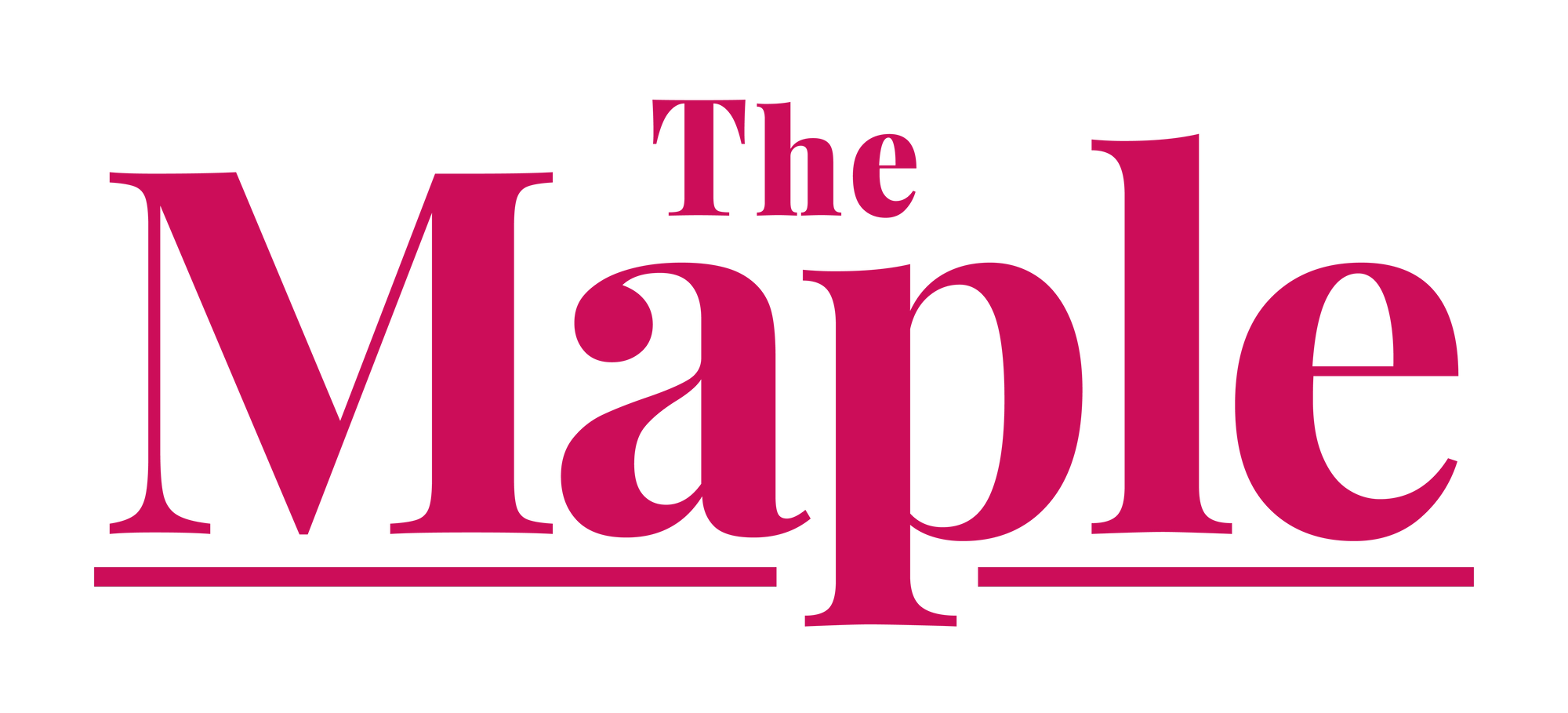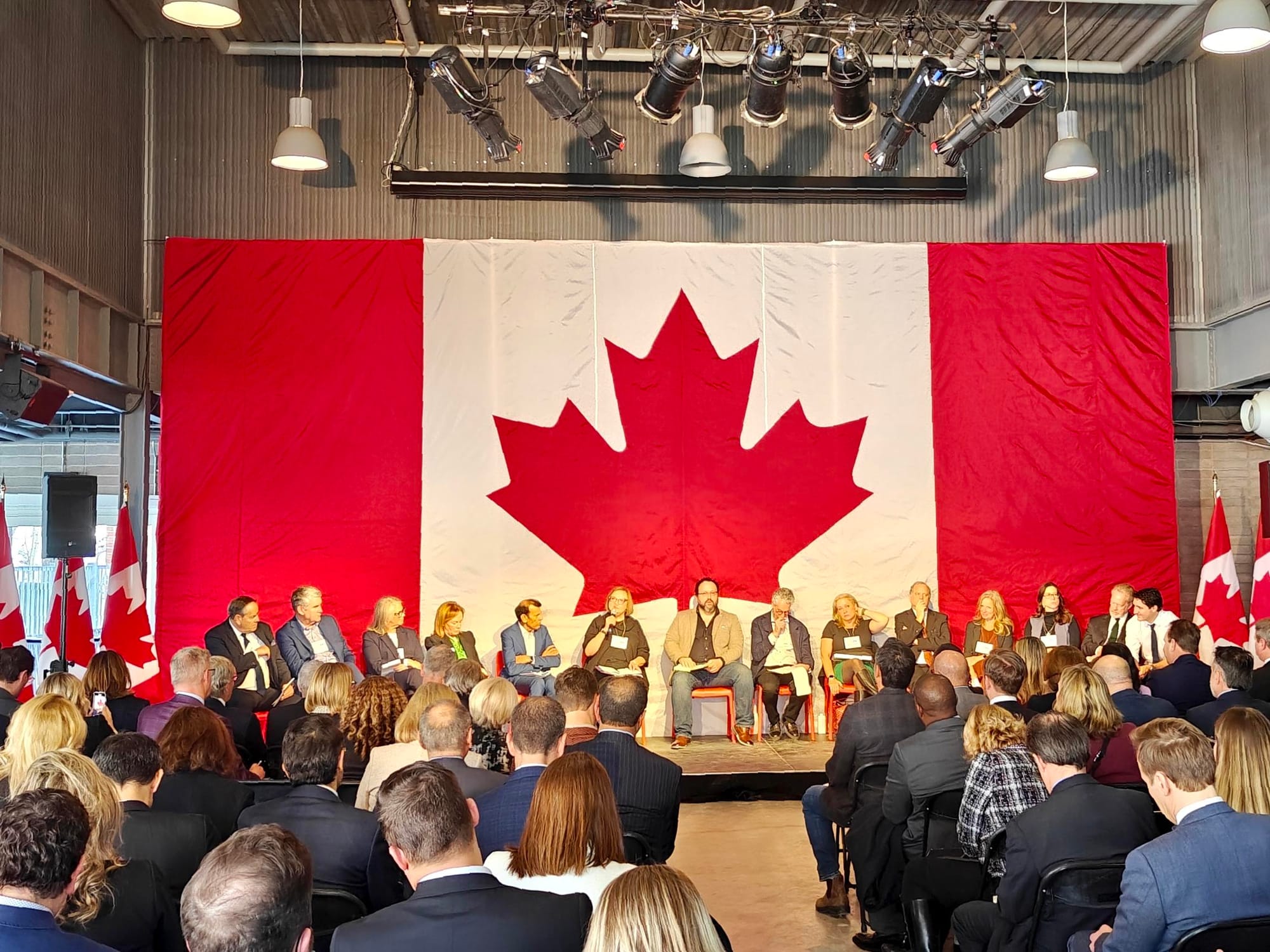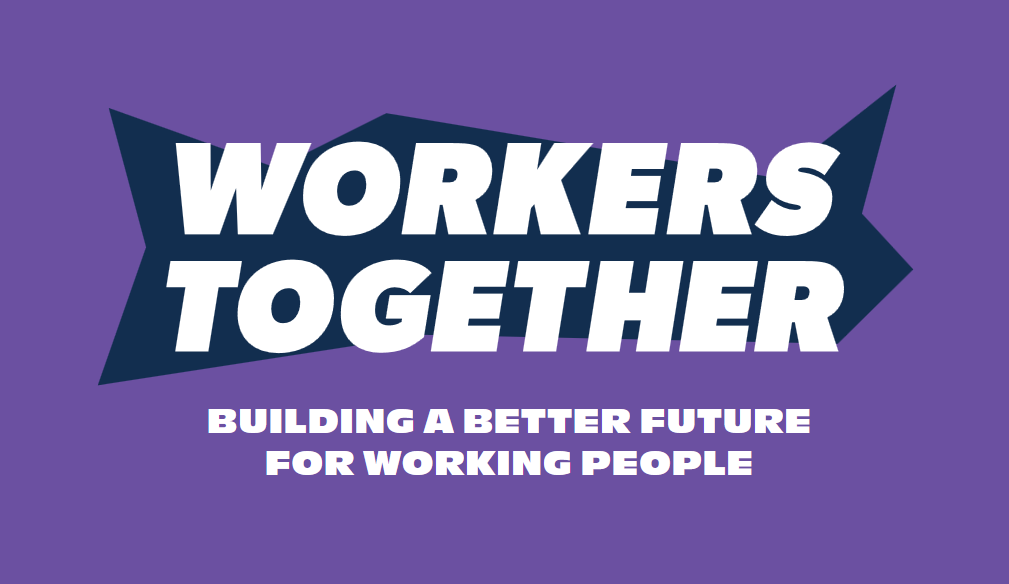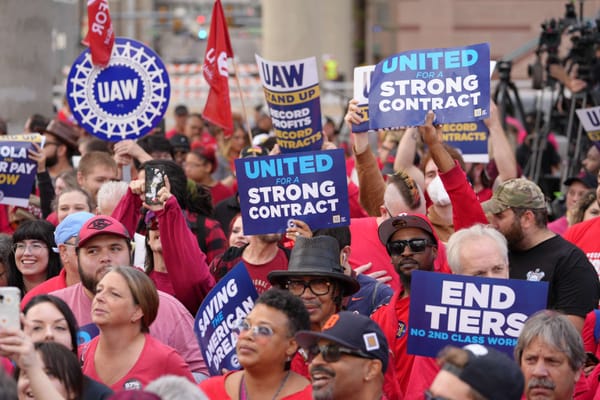
Last week, United States President Donald Trump paused the implementation of his 25 per cent tariffs on Canadian imports until April 2.
Although he’s walked back from the cliff’s edge once again, we are still on the precipice of widespread economic disruption. As was the case on the eve of the pandemic, we are ill-prepared, our social safety net containing the same deficiencies now as then.
Despite the latest delay to across-the-board tariffs, levies on Canadian steel and aluminum products entering the U.S. are nevertheless scheduled to take effect on March 12, which will have significant impacts on a variety of industries and harm considerable numbers of workers on both sides of the border.
The Trump administration’s broader tariff pause is likely only a temporary reprieve. The federal government has therefore kept in place the first phase of its retaliatory tariffs begun on March 4, targeting $30 billion in American goods, including appliances, clothing and a wide range of food and agricultural products.
In a press release, the Trudeau government called the American tariffs “unjustified, and detrimental to both Americans and Canadians.” The release continued, “While we urge the U.S. administration to reconsider their decision to impose tariffs, Canada will remain firm in standing up for our jobs, our industries, and our workers.” The government aims to have the full tariff threat removed and is therefore leaving in place its first batch of counter-measures.
As the government further indicated, should the Americans follow through with their across-the-board tariff scheme in April, Canada will implement the second phase of its plan targeting an additional $125 billion in U.S. imports. These listed items include finished vehicles, electronics, steel and aluminum. For now, the second wave is temporarily “halted.”
Ontario Premier Doug Ford, who recently won a third majority government with another abysmally low voter turnout, is moving forward with a 25 per cent export levy on electricity supplied to Minnesota, Michigan and New York.
In British Columbia, the provincial government looks poised to also follow through with imposing tolls on American freight trucks travelling to Alaska.
Make no mistake, we are in a serious trade war, whether we want it or not. Trump’s latest “pause” is just another interlude in what are sure to be years of turmoil and threats. Even if Trump again kicks the can down the road in April, his actions have already spread uncertainty throughout the economy, exacerbating a slowdown that was evident before the U.S. election. Workers are going to bear the brunt of the fallout.
As John Paul Tasker at CBC put it, “The events of the last week show what Canada is in for over the next nearly four years: chaos, unpredictability and constantly moving goal posts from a White House that doesn’t play by normal trade rules.”
Large sections of the business class are bracing for a shock, and have been noting as far back as November the financial uncertainty being caused by Trump’s tariff threats.
The auto industry, of course, will be one of the hardest hit by the Trump trade war. According to reporting in the Toronto Star, Canada exports roughly $70 billion worth of finished autos and parts to the U.S., with many products crisscrossing the border several times. Auto sector trade overall between the U.S. and Canada amounted to roughly $120 billion USD last year alone. Moreover, according to the Automotive Parts Manufacturers’ Association, a lobby group that represents Canadian auto parts makers, their member businesses operate more than 170 plants across 26 American states employing nearly 48,000 workers.
Though many auto and parts manufacturers were relieved by the tariff hiatus, most recognized that the threat of economic disarray still looms large. A Unifor press release called the tariff pause an “extortion tactic,” speculating that Trump may be using the next 30 days to pressure auto executives into divesting from Canada.
Unifor’s Auto Council and Independent Parts Suppliers Council, which represents 37,000 auto workers across Canada, released a statement on Thursday condemning “the unjust imposition and ongoing threat of tariffs.” The councils further report that they adopted a “zero-tolerance position on U.S. tariffs and threats to Canadian jobs and Canadian sovereignty,” which “commits the full resources of our respective local unions and the National Union to take direct action, to support Canadian jobs, by whatever means necessary.” This is welcome and strong language, though it remains to be seen what the commitment entails.
As the Unifor council’s statement further points out, Canadians purchase around 2 million new vehicles every year, yet Canadian plants produce far fewer than this. Indeed, the U.S. enjoys a considerable auto trade surplus with Canada.
No matter how you look at it, workers are in for a rough ride, in the immediate future and likely over the long haul of the Trump administration.
If or when Trump’s tariffs are fully implemented, financial uncertainty will graduate to economic dislocation, and the pain won’t be confined to workers in select industries, like auto, steel, and aluminum. As job losses accumulate in sectors directly affected by the tariffs, it will cause a dampening of demand that drives a generalized slowdown.
Only a short time out from the economic devastation wrought by the pandemic, workers will again be faced with heightened unemployment and turmoil. Yet, the dynamics of a recession resulting from Trump’s trade policy will look very different from the pandemic downturn.
During the pandemic, we experienced a deep but short recession, followed by a relatively rapid recovery. The travesty is that we allowed politicians and monetary policymakers to cool the post-pandemic economy, undermine a tight labour market, and abandon the promise to “build back better.”
A Trump-imposed trade war could mirror the recessionary downturn of the pandemic (though likely more slowly), but it won’t resemble the recovery that took place during the post-COVID reopening. Instead, the effects of American tariffs are more likely to be deep and long-lasting.
According to Bank of Canada modelling, 25 per cent American tariffs could shave Canadian GDP down by several percentage points over the next three years, while causing considerable inflationary pressure. In other words, we could be in a “stagflationary” period for a number of years as a result of the American trade war.
Quite clearly, we need an emergency plan to aid affected workers. As former director of research at the Canadian Auto Workers, Sam Gindin, told Class Struggle recently, in the long-term Canada needs to break its trade dependency with the U.S. Yet, for now, emergency measures will also be paramount.
There appears to be widespread support for the government to spend to protect workers. According to polling commissioned by the Canadian Labour Congress, 90 per cent of respondents support an investment plan to promote job creation and 80 per cent want the government to support people impacted by job losses.
Ottawa has indicated that it has plans for a “pandemic-level” response, but with Parliament prorogued, many of the items can’t be undertaken until at least March 24.
First and foremost, we desperately need to re-implement enhancements to the Employment Insurance (EI) program. The utter failure of our system of unemployment benefits was exposed for all to see during the pandemic, yet after instituting temporary half-measures during the pandemic, the government reimposed the old system, despite promises of reform.
In fact, the current Liberal government has been ‘pledging’ to fix EI since they first formed government in 2015. Despite extensive stakeholder consultations and acknowledgement of the deep issues with the system, the government pushed off reforms again in 2023, expressing concern that change would further harm a slowing economy. The program’s overly strict eligibility rules continue to deny benefits to many unemployed workers, as well as those in non-standard forms of employment, such as gig economy work.
With the same broken system still in place, union leaders and economists across the country are again calling for enhanced EI measures.
There are some indications that temporary reforms are in the offing, such as improvements to the EI work-sharing program that allows workers with reduced hours to receive partial benefits, but such minor changes are unlikely to go far enough to ensure against the Trump trade threat.
At the same time, we can’t allow a trade war to turn into a bonanza for corporations and the rich. We don’t need a repeat of the pandemic’s Canada Emergency Wage Subsidy, wherein corporations received massive financial support, yet continued to pay out dividends to shareholders and approve exorbitant executive salaries. Government must “insure wages, not profits.”
Beyond reforming EI and ensuring workers have the benefits they need to weather the storm, we need a broad-ranging plan of public investment to offset the private sector’s contraction. As Hadrian Mertins-Kirkwood at the Canadian Centre for Policy Alternatives has outlined, such a plan should centre green energy, public transport and housing, youth employment, and promotion of arts and culture.
As when the pandemic hit, so much of our economic and social system remains battered and broken. Trump’s trade war could make things appreciably worse, if we allow it. The best defence is a radical alternative that centres worker protection and the public good.
CORRECTION: This newsletter has been updated to accurately note that a Unifor press release called the tariff pause an “extortion tactic,” not an “exhortation tactic.” The Maple regrets this error.
Recent Class Struggle Issues
- March 4 | Quebec Is Taking Trudeau’s Lead And Attacking Unions
- February 25 | The U.S. Saw Just Half Of The Number Of Strikes In 2024 As Canada
- February 17 | The Business Lobby Wants To Take Paid Holidays From Toronto Workers
- February 10 | Doug Ford’s Government Has Been Disastrous For Workers







